Cherokee Syllabary §
- Additional information here
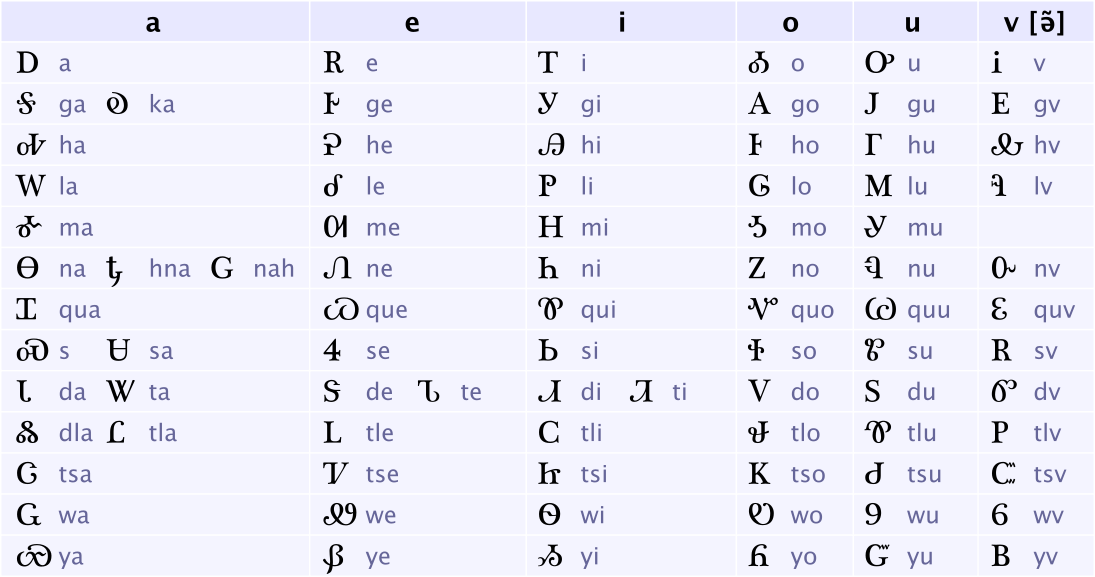
The Cherokee Syllabary. Attribution: Sakurambo at English Wikipedia, Public domain, via Wikimedia Commons
Hebrew §
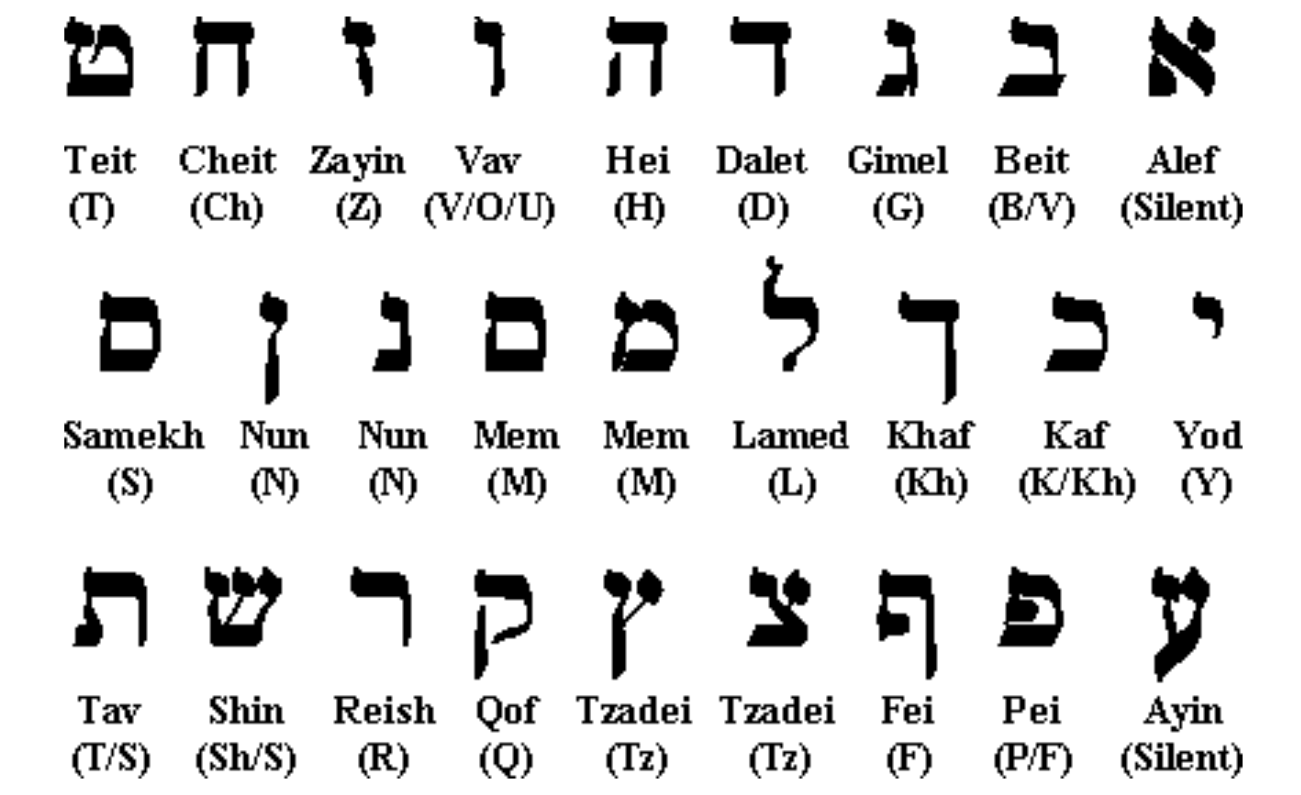
The Hebrew Consonants. Read right to left Image taken from https://www.jewfaq.org/hebrew_alphabet.
- Additional information here
Hiragana §
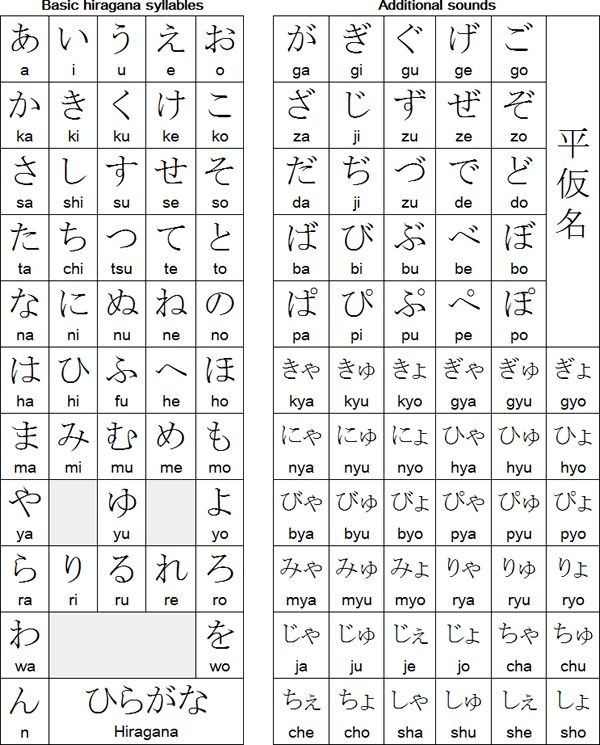
Hiragana. Image taken from Omniglot.com
- Diacritics map from unvoiced consonants to voiced consonants namely
- k - g
- s - z
- t - d
- h - b (diagonal strokes)
- h - p (circle)
- It is more common to use じ and ず for ji and zi
- We use つ (“tsu”) to transcribe double consonants.
- We use ん (“n”) + hiragana with an n-sound for double consonant n’s When it is followed by a vowel or at the end of an utterance, ん indicates that the preceding vowel is long and nasalized.
- For blended vowels
- See here for stroke order for Hiragana
Katakana §
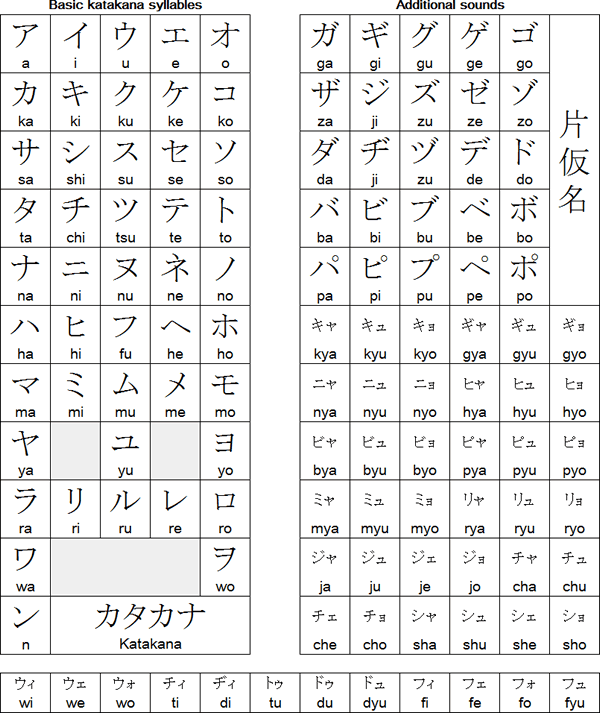
Katakana. Image taken from Omniglot.com
- Katakana is similar to Hiragana except long vowels are written with — (If writing vertically, it is also written vertically).
- To transcribe foreign sounds, we combine existing sounds in Japanese.
Vai Syllabary §
- Additional Information here
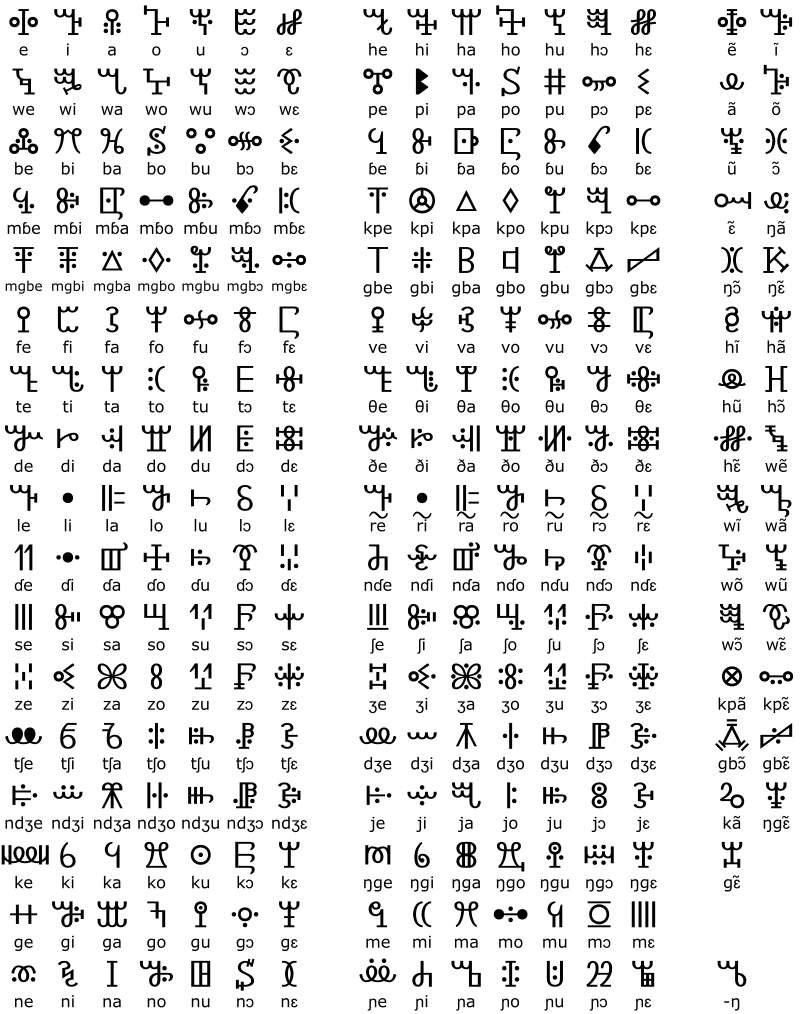
The Vai Writing System. Attribution: Leviavery, CC0, via Wikimedia Commons
- Remark: Vai has an interesting syllabary and writing system. It uses points to distinguish varieties of consonants like Arabic, however it requires context .
Links §




